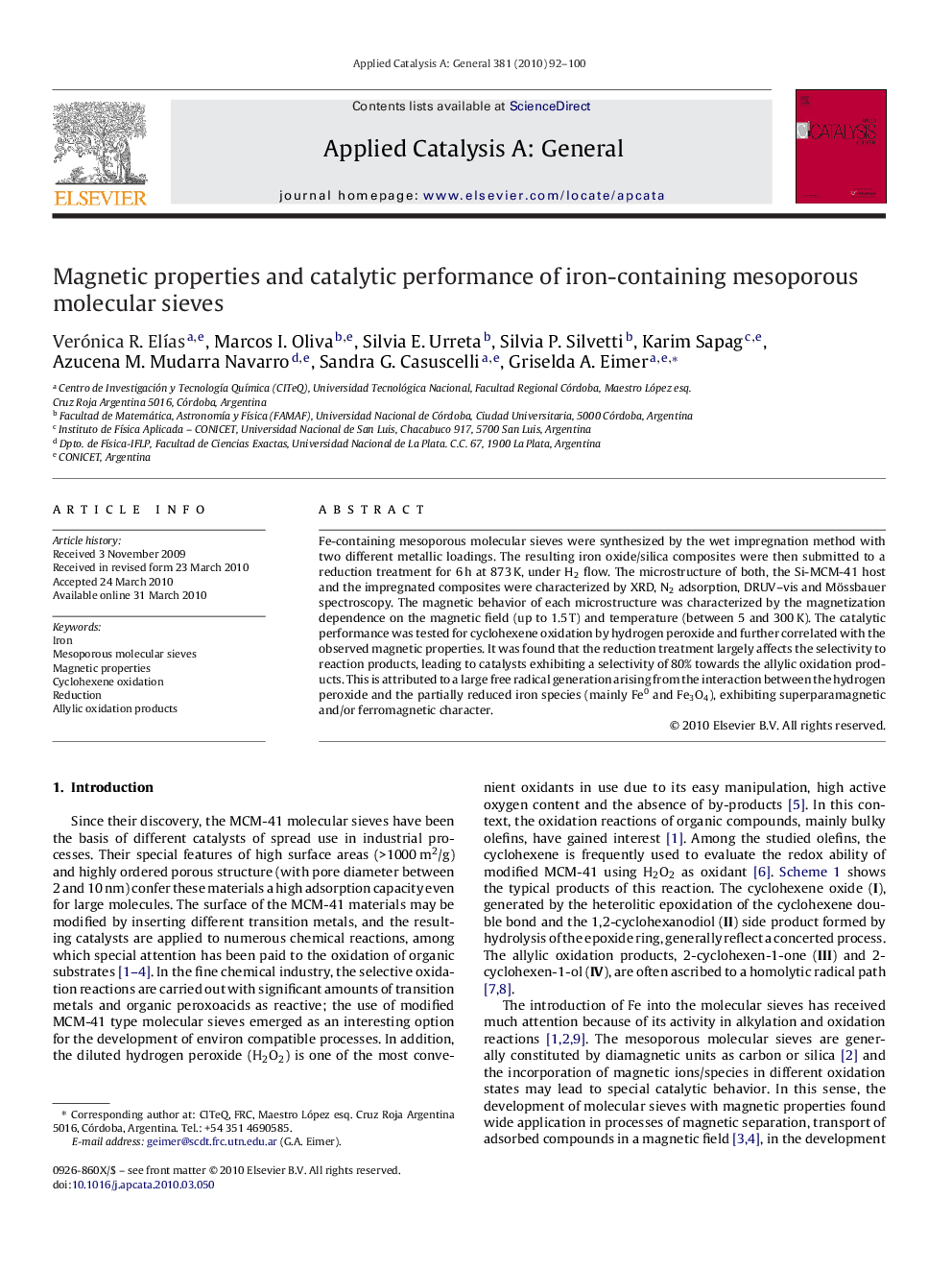| Article ID | Journal | Published Year | Pages | File Type |
|---|---|---|---|---|
| 42031 | Applied Catalysis A: General | 2010 | 9 Pages |
Fe-containing mesoporous molecular sieves were synthesized by the wet impregnation method with two different metallic loadings. The resulting iron oxide/silica composites were then submitted to a reduction treatment for 6 h at 873 K, under H2 flow. The microstructure of both, the Si-MCM-41 host and the impregnated composites were characterized by XRD, N2 adsorption, DRUV–vis and Mössbauer spectroscopy. The magnetic behavior of each microstructure was characterized by the magnetization dependence on the magnetic field (up to 1.5 T) and temperature (between 5 and 300 K). The catalytic performance was tested for cyclohexene oxidation by hydrogen peroxide and further correlated with the observed magnetic properties. It was found that the reduction treatment largely affects the selectivity to reaction products, leading to catalysts exhibiting a selectivity of 80% towards the allylic oxidation products. This is attributed to a large free radical generation arising from the interaction between the hydrogen peroxide and the partially reduced iron species (mainly Fe0 and Fe3O4), exhibiting superparamagnetic and/or ferromagnetic character.
Graphical abstractThe synthesis of Fe-containing mesoporous catalysts by wet impregnation and further reduction treatment was reported. Their magnetic behavior and catalytic performance were tested in the cyclohexene oxidation with H2O2.Figure optionsDownload full-size imageDownload high-quality image (39 K)Download as PowerPoint slide
